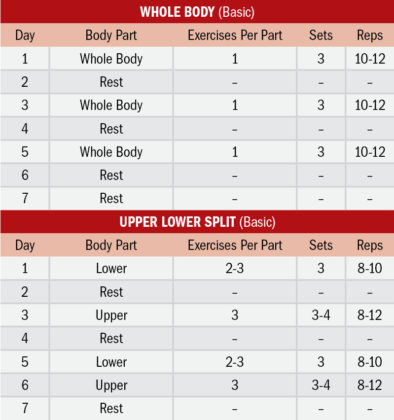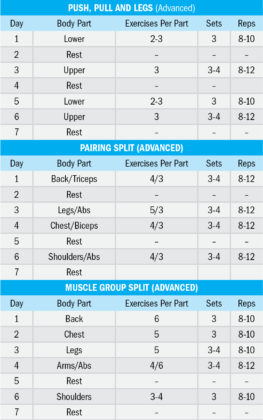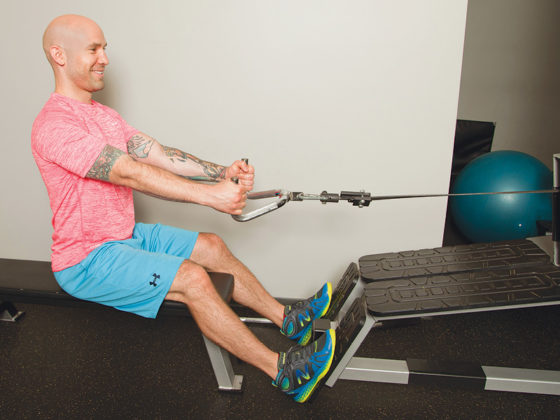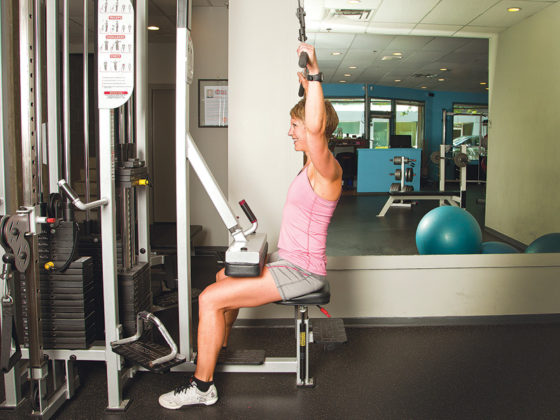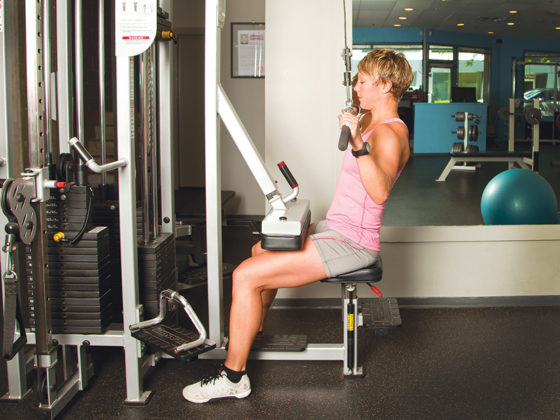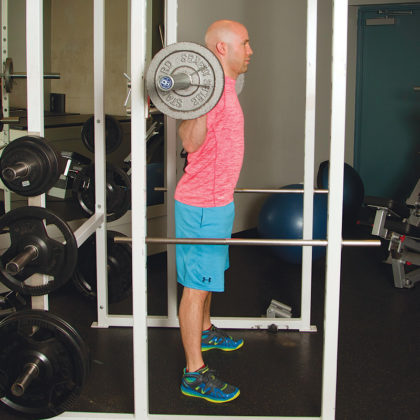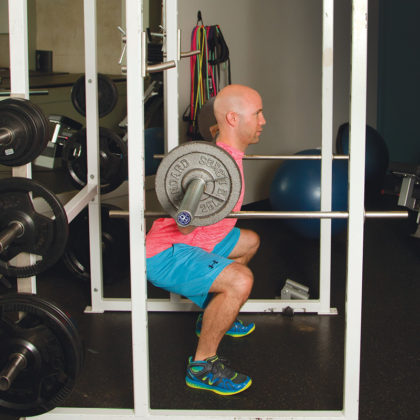
There are a lot of good reasons to go to the gym. Weight loss, increased flexibility, overall better health; whatever your motivator is you’ll benefit from focusing your workout to meet your goals.
Strength training is no different. A focused strength program will benefit an athlete in virtually every sport. So if your program calls for cross training, your coach probably really means strength training, building muscle under the load of weights. A swim day for a runner isn’t cross training, it’s a swim workout. Yoga isn’t cross training.
HERE’S A ROAD MAP FOR BUILDING MUSCLE, REAL MUSCLE:
- Number of workouts: When starting out you can expect to do 3-5 sessions a week in the gym, depending on the routine you choose. Remember, rest days are as important as workout days.
- Number of sets: Just so we’re clear on definitions, a set is one complete round of repetitions of an exercise. For our strength gain group you will be doing 3-4 sets of each exercise.
- Number of repetitions: The number of reps you do, at what weight and at what speed is the real defining factor in your results. When working out we say your muscle is “under tension”. Time under tension is really about the pace at which you perform a repetition. The key here is to keep it slow. For strength, the lowering, or setting, phase of the exercise should be no faster than a 4 second count, the lifting, or exertion, phase should be no faster than a 2 second count.
- Split Routines: Strength training workouts are often designed in what we call split routines where the muscles are divided up by group and exercises are performed on specific days.
FOR BEGINNERS, IT’S BEST TO STICK TO THE BASICS:
- Whole body: Where you work every muscle group on the same day. This requires a rest day after each workout day and will be performed three days a week.
- Upper, Lower Split: Exactly as it sounds, Day 1 will be upper body, Day 2 lower body and usually abs. This allows you to double up days, then add a rest day making it a four day per week split.
AS YOU ADVANCE, YOU MAY WANT TO SHAKE THINGS UP:
- Push, Pulls and Legs: Not an easy split but very effective. Push muscles are the chest, shoulders and triceps, pull muscles are the back, biceps and the legs are quadriceps, hamstrings, glutes and calves. Usually means five or six days a week to complete.
- Pairing Split: Pair up some of the above groups to shorten the week. You may do back and triceps followed by legs, then chest and biceps and another leg day with rest between them.
- Muscle Group Split: Each day is dedicated to one muscle group so all your exercises for chest will be on the same day. This is usually done consecutively with a rest day at the end, but you can add a rest day in the middle if needed.
The amount of weight to lift will vary from person to person and will change as your workouts progress. Your safest and most efficient plan should include a consult with a personal trainer. You’ll quickly have a workout routine that turns time in the gym into time well spent as you start to see your goals being met one after the other.
Exercises:
Once you have chosen your training schedule, you need to add a few exercises to your plan. Below we have highlighted four great exercises that can be added to any of the workout schedules. Remember to adjust the weight to meet your desired rep count of 8-12, completing 3-4 sets of each exercise. Stick with the schedule and you will start to see fantastic results.
1. Narrow Grip Seated Row
- Start with a bar that is narrower than your shoulders.
- (V-Bar is most popular) with a hammer grip.
- Since our focus will be the rhomboids start the movement by pulling your shoulder blades together first, then draw your elbows toward your rib cage. Your hands will finish below the sternum.
- Breathe out as you pull the bar back and keep on squeezing those shoulder blades.
- Inhale and return to your starting position then repeat.
2. Lat Pulldowns
- Start with a wide grip and your palms forward sitting with a small lean backwards.
- From this position depress your shoulders and scapula as you bring your elbows toward you ribs. The bar will finish between your chin and collar bone.
- Breathe out as you bring the bar down.
- Do not press the bar down. Instead, try to keep your forearm in line with the pull of the cable as your chest remains high; no crunching as you pull down.
- Inhale and return to starting position then repeat.
3. Barbell Bench Press
- Start with your eyes lined up under the bar and your grip slightly wider than your elbow joint. This grip will allow your elbow to be at 90 degrees at the bottom of the lift.
- Tighten your abs and exhale as you unrack, repositioning the bar above the chest. This is your starting position.
- Breathe in as you slowly lower the bar until your elbow is at 90 degrees and parallel with your shoulder. If you have strong shoulders you can bring the bar lower.
- Exhale and press the bar back to your starting position and repeat.
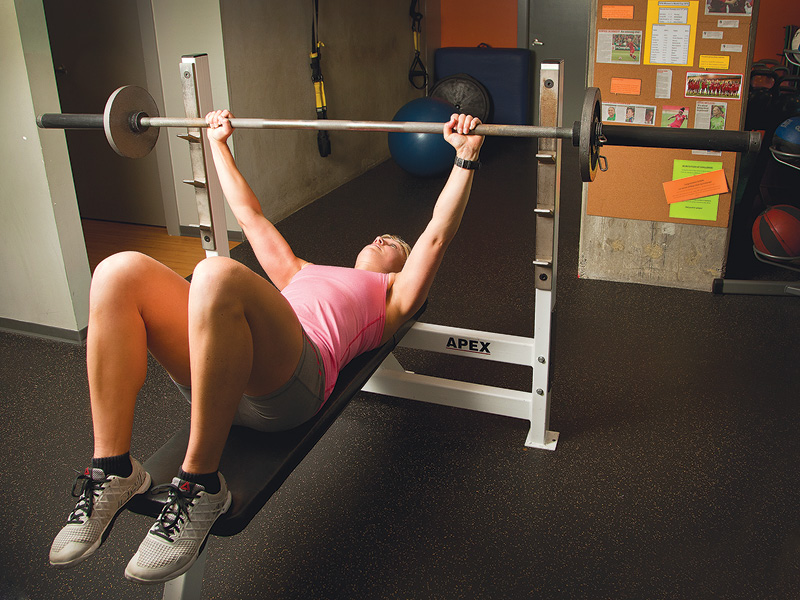
4. Barbell Back Squat
- Grip the bar with your hands just outside shoulder width.
- Your grip should be loose and keep tension out of the shoulder with your elbows pointed to the floor.
- Position the bar above the AC joint and squeeze the shoulder blades together to help take the load off the shoulder.
- Start the squat by slowly moving your hips back and toward the floor keeping the chest high. Be sure not to bow forward. It is more of a sitting motion.
- Breathe in as you lower.
- If you have healthy knees and back, go to 90 degree bends at the knees; if you don’t, stop prior to 90 degrees.
- Exhale as you stand and get ready to repeat.


